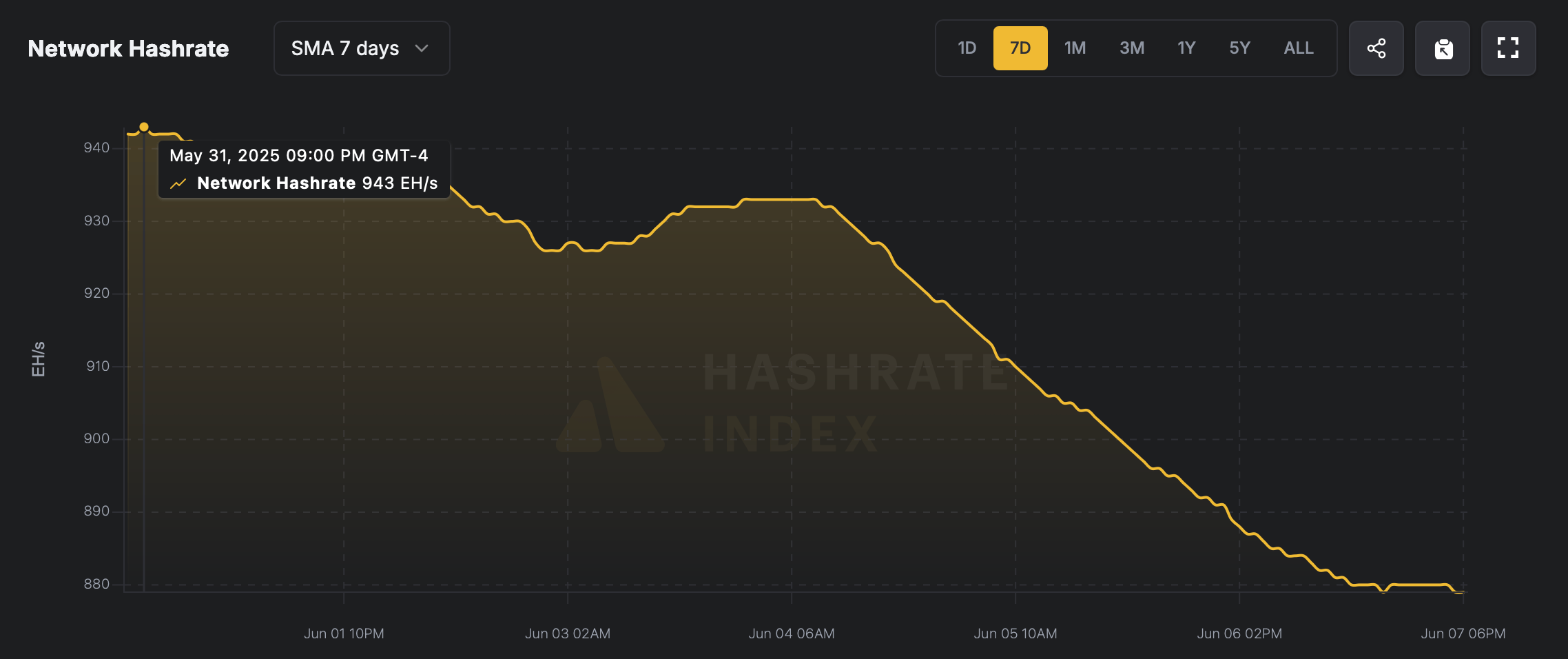Bitcoin’s hashrate hit a record-setting 943 exahash per second (EH/s) on May 31, but in the days since then, the network’s processing power has dipped by more than 75 EH/s.
Bitcoin’s Block Time Slows as Miners Buckle Under Difficulty Spike
Bitcoin miners wrapped up May on a high note, notching their best earnings since the fourth halving event in mid-April 2024. To cap it off, the network’s computing power—better known as hashrate—climbed to a record-breaking 943 exahash per second (EH/s) on the final day of the month. Fast forward a week, and the seven-day simple moving average (SMA) shows the hashrate has cooled to 868 EH/s, a drop of 75 EH/s.

Hashprice—essentially the daily value of one petahash per second (PH/s)—is still stronger than it was a month ago, though it’s slipped significantly since late May. On May 29, it hovered around $57.12 per PH/s, but has since fallen 7.53% to $52.82, based on hashrateindex.com data. One likely culprit? The difficulty adjustment that kicked in on May 30, pushing mining difficulty to a peak of 126.98 trillion.

A difficulty level of 126.98 trillion means bitcoin miners are aiming to generate a hash that falls below 1 out of 126.98 trillion possible values. As this number rises, so does the effort—mining a block demands more energy and computing muscle. Bitcoin’s built-in adjustment system helps maintain a consistent block production pace, tweaking the difficulty every 2,016 blocks to match shifts in the network’s hashing power.
When revenue per petahash (PH/s) declines and mining difficulty climbs, bitcoin miners feel the pinch from both directions. A dip in PH/s earnings means each slice of hashing power brings in less bitcoin—or cash—shrinking overall income. Meanwhile, tougher difficulty levels force miners to burn more energy and resources just to land a single block. This combo tightens profit margins, especially for those running lean or paying steep power bills.
Simply put, they’re making less while shelling out more to stay in the game. This likely put downward pressure on the hashrate. Right now, the average time between blocks is about 10 minutes and 23 seconds, meaning the 2,016-block cycle is progressing more slowly than usual. If this slower pace continues, it could trigger a difficulty reduction—and current estimates point to a potential 3.72% dip ahead.
 news.bitcoin.com
news.bitcoin.com